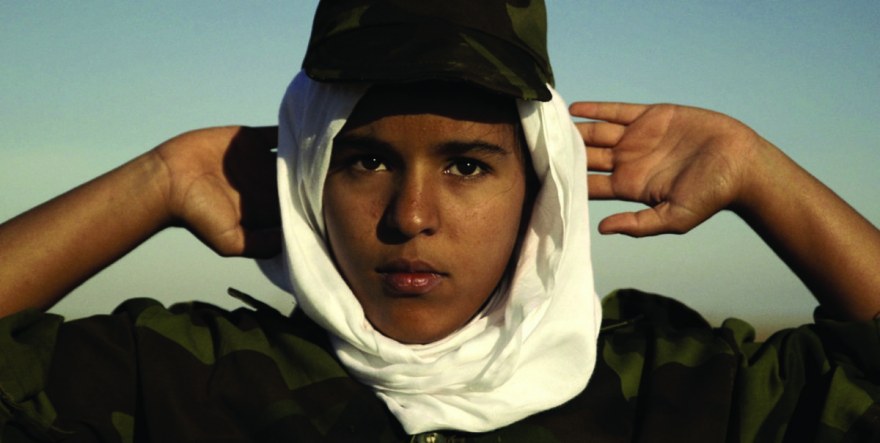Breakfast with Battalion to my Beat
Interview with Eimi Imanishi, director of Battalion to my Beat
Is Mariam based on someone you’ve met?
Yes, Mariam is a combination of two Saharawi women I met and am very fond of. One of them is Mariam (my character’s namesake), my husband’s sister who lives in the occupied territories of Western Sahara, and the other is Murjer, a woman I met in the refugee camps. They are both stoic and fiercely independent and have vowed never to marry in order to be able to continue working and to live their lives without having to serve a husband. Murjer was also a tomboy growing up and spoke to me about how much she had loved playing football until she became a teenager and was no longer allowed to play with the boys. Both these women have influenced me greatly in my personal life as much as in creating the character for the film.
The situation in Western Sahara is not widely known here in France and rarely covered by the mainstream media. What inspired you to tell this story? Was it a controversial topic to address?
I was inspired to tell the story precisely because of how little coverage this issue gets in mainstream media. My husband is from the occupied territories of Western Sahara, and until I met him in Spain I myself knew nothing of the country’s political dilemma with Morocco. Through him and many Saharawi people I met during my visits to the occupied territories and to the refugee camps, I became compelled to share what I learned. This issue and the Saharawi’s plight for freedom is what turned me to filmmaking in the first place. It was highly controversial, unfortunately. My husband’s family was blackmailed by the Moroccan secret police during one of my visits because of some email interaction I had had with activists in Western Sahara. It was a huge learning curve for me to confront a force so much bigger than myself. This film is made with the desire to overcome the fear and frustration that I faced (and many more Saharawis face daily) against such a powerful opponent.
Can you tell us a little bit more about the shooting location and the casting process?
It was HOT. It was a logistical nightmare to get there with the cinematographer and our equipment. But once in the refugee camps, everyone was willing to pitch in to help make this film. It was incredible how much time and resources people shared with us. We found Mariam straight away during our first meeting with our Saharawi producer Ghalia Omar Ahmed – literally day 2 at the camps. We were having tea as customary and talking over our plans and Mariam was sitting in the corner of the room disinterested and annoyed that she had to get some clean cups for us to drink from. She was exactly who I had pictured for the role – even the same age (13)! So I asked her if she’d be willing, and in a most nonchalant teenage way, she agreed. She was wonderful and difficult to work with, just as I would have been at 13. It was so much fun to get to know her and her innate understanding of performance for camera.
How did you get into filmmaking?
I had been studying art and had just finished a BFA in London in 2010 when a large protest broke out in Laayoune, the capital of occupied Western Sahara. There was no western media coverage of this protest that involved thousands of Saharawi men, women, and children setting up a makeshift camp outside of the city in an act of mass protest against their continuing marginalisation under the decades-long Moroccan occupation of their land, as well as an effort to alert an indifferent international community to their plight. I had spent a lot of time in Laayoune over the years with my husband and his family, and I wanted to get involved. My modes of communication were art and the image, so I decided to make a film in the hopes to reach a wider audience. I had never made a film before but somehow I didn’t feel daunted, maybe because I had witnessed what real opposition was like for the Saharawis who faced persecution.
Any cinematic coups de cœur in the past year you’d like to tell us about?
Hmmm. I loved the eerie world of Embrace of The Serpent by Ciro Guerra, and the wonderfully humanistic story telling of Fire At Sea by GianFranco Rosi.
If you’ve already been to the Clermont-Ferrand, could you share with us an anecdote or story from the festival? If not, what are your expectations for this edition?
I was told that I should absolutely attend the festival as a short filmmaker because it is exclusively for shorts, and that it would be a lot of fun meeting other filmmakers. I hope to find distribution for the film as well, and hope that more people will get to see it and learn about Western Sahara.
Battalion to my Beat is being shown in International Competition I3.








